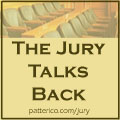The L.A. Times’s Errors in Its Piece on DNA and Cold Hits
I have sent the following e-mail to the authors of that L.A. Times piece on DNA and cold hits:
Mr. Felch and Ms. Dolan,
I believe your recent front-page article on DNA cold case statistics misstated the meaning of the math you discuss.
Your article said:
Jurors were not told, however, the statistic that leading scientists consider the most significant: the probability that the database search had hit upon an innocent person.
In Puckett’s case, it was 1 in 3.
The 1-in-3 number does not pertain to the probability that the database search had hit upon an innocent person. Rather, the 1-in-3 number pertains to the probability that a database search will result in a single match — whether that match is to an innocent person or a guilty one.
If we ignore the existence of independent evidence of Puckett’s guilt, the statistical chance Puckett is innocent depends in part on the probability that the database contains the guilty party. Your article gives no information on what this probability is (although the fact that the database consists of California-based felons suggests that the chances are better than one would find in a purely random database). Without knowing the probability that the database contains the guilty party, you can’t conclude that the 1-in-3 figure accurately represents the chances Puckett is innocent. Your article confuses two distinct concepts and requires correction.
You state:
In every cold hit case, the panels advised, police and prosecutors should multiply the Random Match Probability (1 in 1.1 million in Puckett’s case) by the number of profiles in the database (338,000). That’s the same as dividing 1.1 million by 338,000.
Actually, you have that upside down. Multiplying (1 in 1.1 million) by 338,000 is the same as dividing 338,000 by 1.1 million — not dividing 1.1 million by 338,000.
Your article continues:
For Puckett, the result was dramatic: a 1-in-3 chance that the search would link an innocent person to the crime.
Again, this is wrong. There is a 1-in-3 chance that the search would link someone to the crime. Whether that person is innocent or not depends on the likelihood that the database contains the guilty party (as well as the quality of other evidence tying that defendant to the crime).
I am not the only person saying this. A similar point was made by Eugene Volokh in this post. And I made the point in more detail in this blog post of mine.
I think the paper owes readers at least two corrections — one of the 1-in-3 statistic, and one on the upside-down division. Given the prominence of the error on the 1-in-3 statistic, which appeared on the front page of the Sunday paper, I hope your paper will make an effort to give this correction the prominence it deserves.
cc: Readers’ Representative
I’ll let you know what I hear in response.
P.S. When I say “Rather, the 1-in-3 number pertains to the probability that a database search will result in a single match — whether that match is to an innocent person or a guilty one.” I meant to express this concept: “Rather, the 1-in-3 number pertains to the probability that a database search will result in a single match, period. If we get a single match, we won’t know whether it was to an innocent person or a guilty person without learning more.” In other words, without prior knowledge of the likelihood that the database has the guilty person, all we know is the chance of a hit — not the chance that a single hit has come back to an innocent person.
P.P.S. I just changed the last phrase from “not the chance of a hit to an innocent person” to “not the chance that a single hit has come back to an innocent person.” That more accurately expresses what I was trying to say.
Expressing statistical concepts in accurate English is like walking a tightrope.


